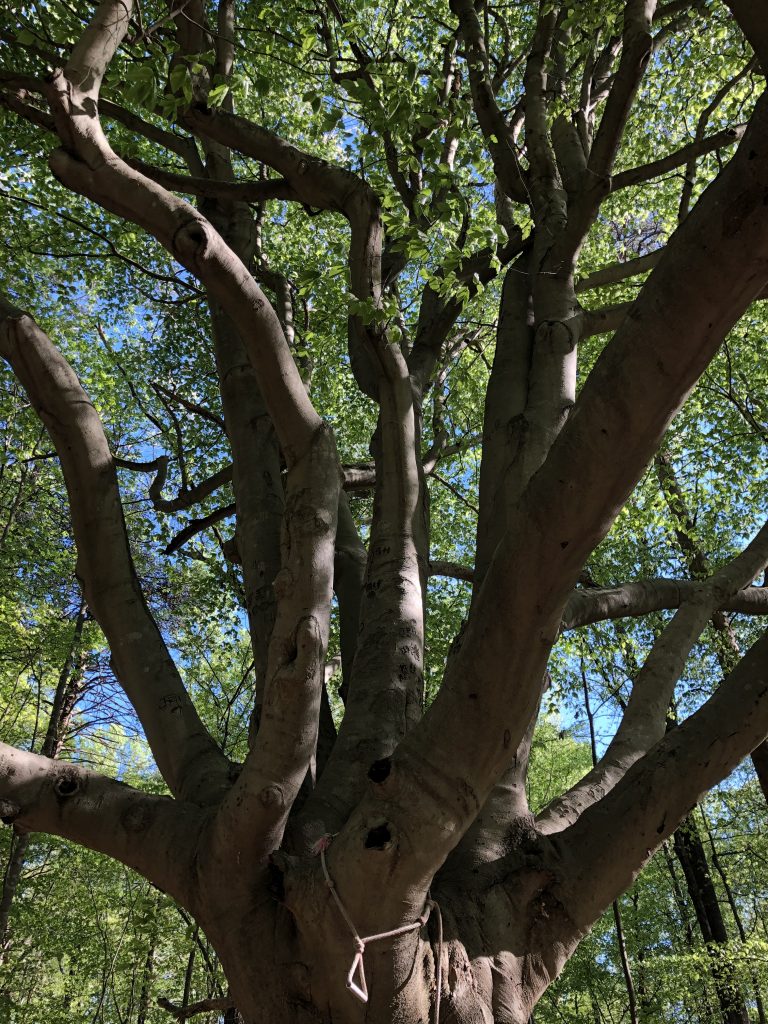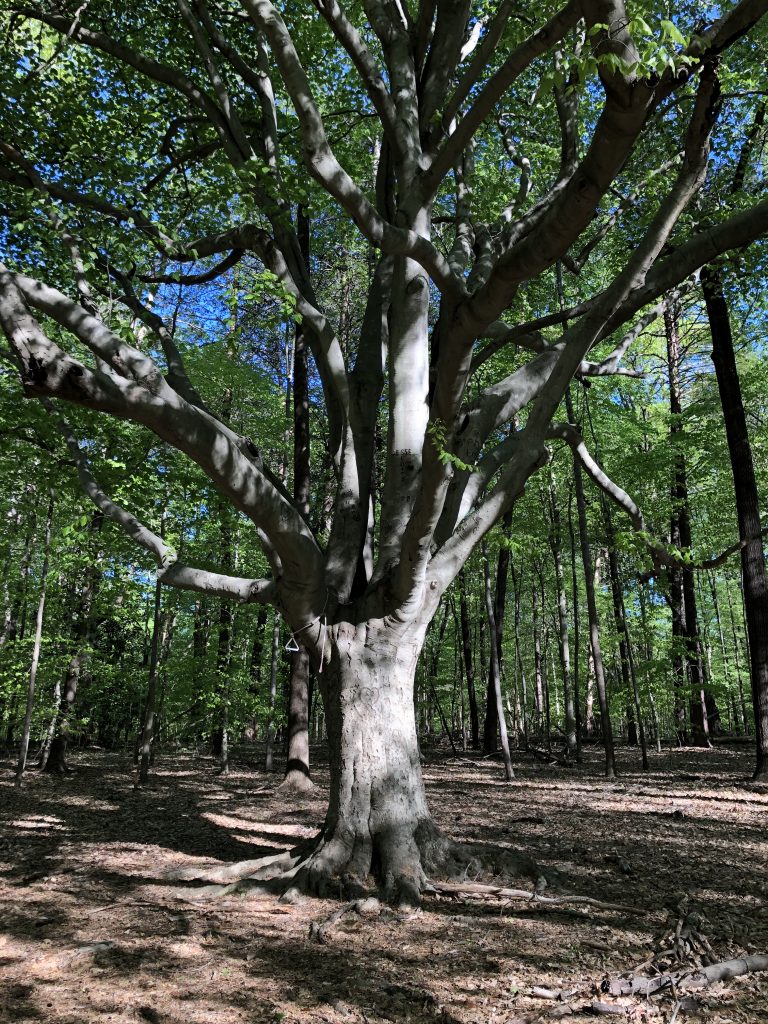One of the standout trees in the woods is a massive American Beech tree (Fagus grandifolia Ehrh.) that stands relatively alone in a clearing off the side of the road that passes by the lake. With its vast yet short trunk and many strong sprawling branches it creates the perfect atmosphere for one who is excited to climb. The wide area that is covered by the shade of the leaves also allows for optimal comfort when lying out on a warm spring day, on the flat, mossy earth that covers the clearing. Its massive branches stretch out in every direction as the tree claimed its territory amongst its competitors. This tree was greatly successful in establishing its own space as it is one of the only trees in the woods that has declared its solitude amongst a sea of other closely situated neighbors.

The strong branches create shade for the rest of the clearing. 
The Beech tree establishes its space amongst many neighbors.
The American Beech tree is a tree that favors shade over a sunny environment. Which explains its position amongst trees that are much taller than it. It also requires soil with a high moisture content in order to grow, meaning the clay rich soil of the Guilford woods creates a perfect environment for the tree to stretch its long roots beneath the surface. These roots are often shallow and fibrous roots that stretch out wide around the base of the tree, creating the potential for isolation. With such a wide and shallow root system, it is difficult for other plants and trees to establish their own root system, which explains the way it has claimed its own territory.

The tree is also known for its relatively slow rate of growth, sometimes only growing 12 or 13 ft. in 20 years, but when living in soil that has a high moisture content, such as the soil of our woods, this rate can increase. Due to the size of the tree that is located in the woods, it is clear that it has been around for quite some time.
These trees are commonly found in forests that are in the final stage of succession, meaning the last stage of how the species structure of an environment may change over long periods of time. This is a process that often occurs in forests that are situated in disturbed places, which could make sense when referring to the Guilford woods, as it is situated in the middle of a city. As the area around the woods changed, and as the land use shifted over time from a site of natural wilderness to a relatively densely populated area, the composition of plants and trees that grow in the woods changed as well.
The nuts that fall from this tree are a source of food for various different species that live in the woods, such as the deer, foxes, geese, squirrels